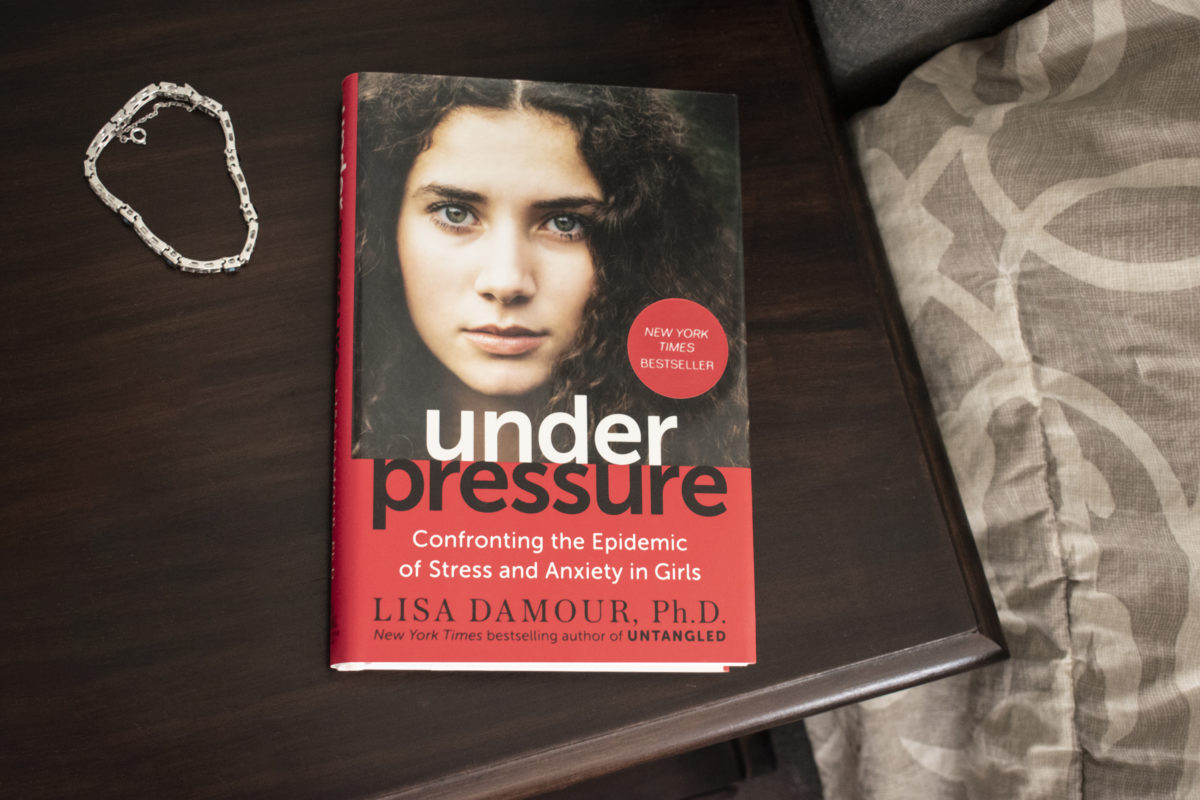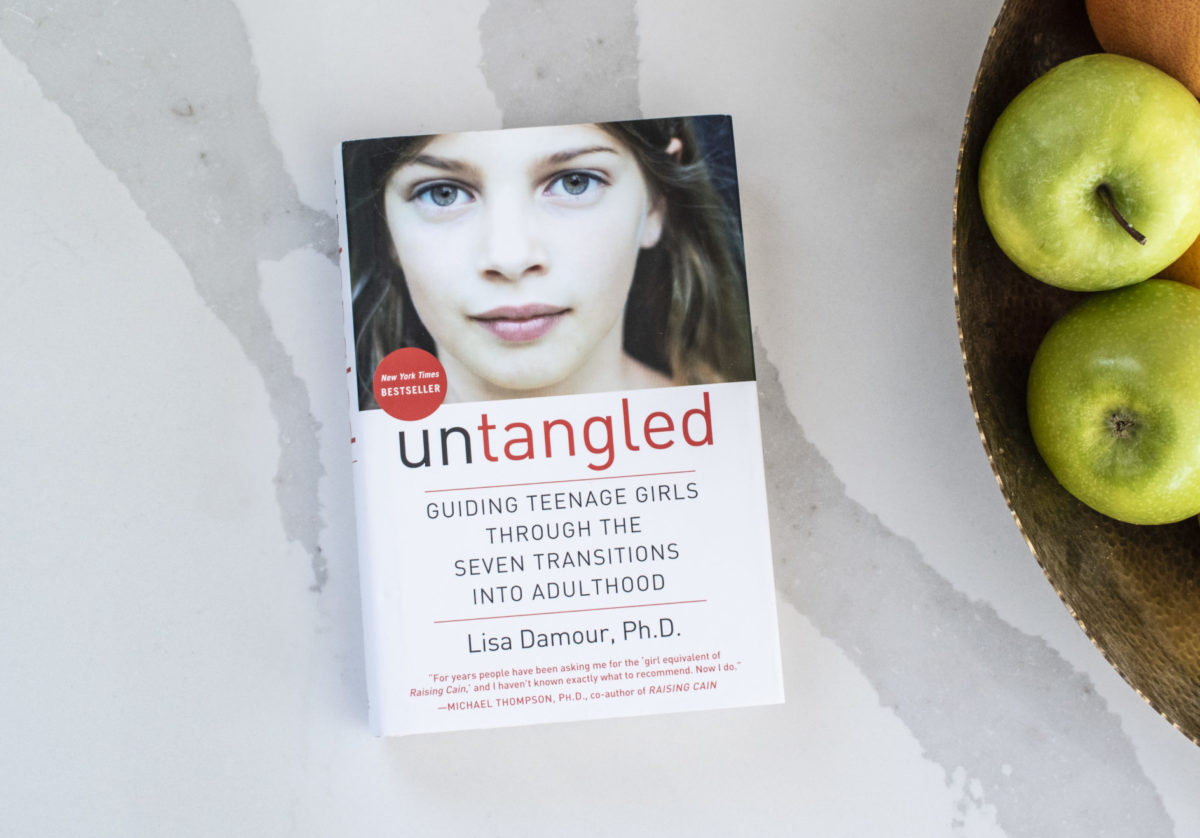Anxiety often serves as a normal and useful warning system – an emotional alarm that rings when something isn’t right. Lisa discusses the difference between healthy and unhealthy anxiety, and explains how anxiety changes the activity of the heart and lungs. She provides tips on how to counter anxiety by harnessing the connection between the lungs and the brain. What is the difference between sadness and depression? When should we be concerned about the possibility of suicide? Lisa and Reena also consider common warning signs. The show ends on an upbeat note about effective psychological interventions for treating anxiety and depression.
September 22, 2020 | 30 min
Transcript | When Is Anxiety a Disorder? When Does Sadness Become Depression?
Ask Lisa Podcast, Ep. 7: When Is Anxiety a Disorder? When Does Sadness Become Depression?
The Ask Lisa Podcast does not constitute medical advice and is not a substitute for professional mental health advice, diagnosis or treatment. If you have concerns about your child’s well-being, consult a physician or mental health professional.
REENA: How’s the work life balance going for you, Lisa?
LISA: Um, there is no balance. My family and work life right now, I feel like I’m doing both all the time.
REENA: Yeah. I’m realizing a horrible school teacher. My kids are realizing it, and I think they’re getting really frustrated and anxious about whether they’re completing everything online that needs to be done, and sometimes it’s hard even though the teachers lay everything out. It just got me thinking, you know what is anxiety? How do you know if you’re suffering from anxiety? And then I saw in our inbox we got this letter. It says: ‘Hi, Dr. Lisa. My daughter is in grade nine, does not like school to begin with. This year is compounded by six months off school. She just couldn’t manage online learning and COVID at the same time. She’s scared, no, she’s actually terrified about the return to school. She finds clothing uncomfortable to begin with, and wearing a mask all day is terrifying. We’ve been practicing, and in public, she can manage well, but privately tells us it’s hard to breathe and it makes her panic. Here’s my question: What do you recommend parents like us do to help her manage school?
LISA: I am really glad we got this letter because I think there are a lot of kids and families out there where the very act of showing up for school is anxiety-provoking anyway, which is what this mom is indicating, that school has never been a place that her kid was like skipping off to, and then to do it in a mask, and then to do it with fears of contamination. I think there’s lots of kids out there for whom that is just more than they can comfortably, or even uncomfortably handle, it actually feels beyond what they can do, and it sounds like this mom has got a very strong sense that that’s where they are, that their daughter is actually panicking. That word always gets my attention.
REENA: How do you know, like I panicked when I realized at 2:30 that my daughter had finished all her assignments and had half of them still left. Is that panic? Is that anxiety? What does panic and anxiety really look like?
LISA: Well, so anxiety is kind of part of the fabric of life. You know, we have moments all through the day where we’re like, “I forgot to do something” or if we’re driving like, “That driver’s swerving” You know and that kind of feeling you know is part of just day-to-day. Everybody experiences it and actually in psychology we see that kind of anxiety that, I’ll call it threat responsive anxiety, when we sort of have a heightened awareness of our environment because something’s not quite right, we see that as really normal. We really view that as healthy protective, kind of an emotional alarm system, and it’s a good alarm system when it works in proportion to what’s happening. Panic, usually, when people are using it, they’re talking about having a disproportionate reaction, right? So it might be something where we can’t find something small and then we panic about it, and we know that we’re over reacting. I don’t know if you panicking about your kiddo and her work, I don’t know if that was an overreaction or expectable.
REENA: Or just the tiger mom inside of me?
LISA: Maybe, who knows. We make this really clear line between what we call healthy and unhealthy anxiety. So healthy anxiety is proportional. It’s when we have that rising tension, rising heart rate, rising awareness, because something’s not quite right and the degree of our response makes sense, and then unhealthy anxiety is when we feel anxious and everything’s okay. There’s a threat response but there’s no threat. Or when we are having a reaction that is out of proportion. So this girl in the question that this mom generously sent us, she’s panicking about going to school in a mask. And going to school in a mask is not something anybody wants to do, but panicking, you know, if we sort of imagine something like this in all likelihood we’d say well that’s probably out of proportion to the real threat of being in school in a mask.
REENA: Is there a version of anxiety that you think is actually okay? That it’s normal, and even though you don’t feel good feeling that way, that it’s actually a healthy response?
LISA: Yeah, yeah, truly like if I’m at the grocery store and somebody is in there with no mask and careening around and getting really close, me having an anxiety response is a good thing. Like that is my alarm going off and saying like watch that shopper get away from them, you know, take your time. So that anxiety in and of itself is okay, but in this example it brings us to annex of something that we want to watch out for, which is anxiety actually undermining daily functioning. So in the grocery store example, anxiety is keeping me safe and helping me manage daily functioning, for this poor girl, her anxiety, it sounds like, it’s gotten so big that it means that going to school feels impossible, and that’s actually when we would want to consider that probably an unhealthy form of anxiety.
REENA: So when that emotion really eclipses and paralyzes your ability to function, that is when you know you’ve got a problem with anxiety?
LISA: Yeah, pretty much. You know if it stops being useful and starts to undermine, I like your word eclipse, that’s beautiful, I don’t know I’ve never heard a psychologist put it that way, but that’s exactly right, and on that I actually have really good news, which is that that’s very manageable even without seeing someone professionally. Often it can help to see somebody professionally, but what we know about anxiety, and this actually I really love that we are answering this question because it gets to one of the most fundamental principles in the understanding of anxiety, which is that avoidance actually feeds anxiety, that if we’re scared of something and then we decide not to do it, the immediate experience is that we feel better, but the long term experience is that it actually becomes more frightening to us.
REENA: Because you’re not dealing with it head on.
LISA: Bingo. Exactly. That whole thing about face your fears turned out to be 100 percent true. So if I imagine, I’m just going to like fill in a lot of blanks here, so if I imagine this poor girl is like, I cannot do it. I cannot do it, I cannot go to school in a mask, and is really having you know an overwhelming panicky anxiety and her parents say, okay never mind you don’t have to, her immediate feeling will be like, oh thank goodness. She’ll feel better right away. And so two things have happened all at once. The first is the avoidance is reinforcing, so she’s thinking about going to school, they tell her she doesn’t have to and she instantly feels better. So then when she thinks about going to school again, she’s going to want to repeat the thing that made her feel better, which is the not going, and then it’s the other thing you said she doesn’t go to school and discover that it’s maybe not great, but it’s definitely in the range of what she could handle.
REENA: You know people who I know who’ve had anxiety attacks, it’s so terrifying when you’re in the middle of one. How do you confront that fear head on, and take small steps to get towards there? If you know you’re anxious about something, how do you take steps one and two to confront?
LISA: So, you can totally get this intuitively. It’s actually all about small steps, and I’ll come back to that, but actually you said something else I just want to rest on for a moment about anxiety attacks are overwhelming, you know kind of panicky responses. Panic attacks, which is a very technical term for this very full blast, you know you feel like the world’s ending, you want the ground to open up and swallow you, they’re awful. They’re actually not that rare. I think about a third of all people will have one in their lifetime, and I had one. I had one in graduate school actually, I remember I was giving feedback on a testing to a parent who was really unhappy with the scores, and I had a panic attack, and you know I think I was the only one who knew it.
REENA: But what did it feel like? What does it feel like when you go through one?
LISA: Well for me it was like a tunnel vision experience. It was just this like the whole universe collapsed into this tiny camera on this angry dad who really didn’t like the scores ,even though they were accurate, and I remember feeling very sweaty and I just remember feeling like I have to get out of here, like I have to get out of here, and it was really awful, and yet as a clinician there’s a part of me that’s like, oh I’m so glad I’ve had a panic attack because I take care of people with panic attacks, so then my empathy is better, but I think it’s good for people to know that a couple panic attacks in a lifetime are not that unusual. They’re very miserable.
REENA: Yeah.
LISA: And this only becomes problematic, again here’s the magic word, if we start to avoid these situations where it occurred in the hopes that we won’t have another one. It’s that avoidance that actually is what gets people in trouble. So if I had said, I’m never doing another testing then I would have been in trouble.
REENA: Yeah. Does your heart beat fast? You know we talk about heart attack symptoms, right? What are the symptoms of anxiety?
LISA: Well it’s actually true, and a lot of times when people show up at the ER with what they think is a cardiac event, and they’re like, no you had a panic attack and send them home.
REENA: Wow.
LISA: Yeah. It’s a decent percentage. So anxiety is really primitive and actually really predictable. So when we have anxiety, really at degree, so it can be a little anxiety or a panic attack, it’s just a matter of degree. What’s happening is some level of a fight or flight response, and the fight or flight response is this caveman reaction that is designed to help us either run away from something or attack it. And so this caveman reaction is like, okay we’re about to run, we’re about to attack, we need a whole lot of heavily oxygenated blood to hit the muscles, so we can run our attack. So the heart rate accelerates and breathing gets quick and shallow and people experience tightness in their chest or feeling like they sort of can’t breathe really well because of this caveman logic going on in our biology, of like, get all the blood to the muscles! So even this very out of control physical experience makes sense if you’re a caveman. But it doesn’t make sense if you’re a graduate student trying to give a score response, you can’t run or attack, doesn’t make sense in the grocery store, but we have this sort of atavistic leftover reaction, which then, the cool thing is, you can control. And this is where breathing really helps because breathing actually counteracts it, and I’ll explain how it’s super cool, and that then gets us back to the steps you mentioned. So here’s the deal on breathing. I think this is the coolest thing ever. So it’s this amygdala, it’s this very primitive region of the brain that tells the heart and lungs to go into overdrive when we’re anxious with this sort of like, get the blood to the muscles so that we can attack a sabertooth tiger, you know, belief. And I had always known that there is a pathway, or I’ve known as long as I’ve been studying this, that there was a pathway from the brain to the lungs to activate the system. But what I didn’t know until a few years ago is there’s also a pathway from our lungs to our brain. They can tell the brain to turn off the alarm, and the reason for this pathway, I think this is extraordinary, our lungs are covered in a network of nerves that are stretch receptors, and their job is to constantly monitor how deeply and slowly we’re breathing, and they’re there in case we suffocate. They’re actually to tell our brain, like freak out now, you’re not getting enough air, and so when we are having an anxiety response and our brain tells our lungs to move quickly and shallow, we can counteract that by deliberately breathing deeply and slowly, and what happens is the stretch receptors on the surface of our lungs pick up the fact that we are now breathing deeply and slowly, and they send a message up the neck to the brain saying, you can turn the alarm off. Everything’s okay.
REENA: Wow.
LISA: Isn’t that amazing?
REENA: That is remarkable. So I’m panicking, I’m panicking, I’m panicking. Breathe deeply and then like out, three, two, one out?
LISA: Yeah. There’s different ways. I mean I do one, it’s called box breathing or square breathing where I breathe in slowly on a count of three, so I go one two three inhale, and hold it slowly for a count of three, one two three, and then I breathe out slowly, one two three, and then I wait one two three. And there’s anyway you do it, all you have to do is make sure you’re breathing deep and slow. And in my experience when I’m teaching this to kids, I explain the biology and the nerves on the surface of the lungs because I think otherwise they’re like, why are you telling me to breathe, like that’s just dumb. But if I say, no look, you need to hack into the network of nerves on your lungs, then I think they think about those nerves and I think that actually amplifies the power of the breathing. So breathing works. And as soon as I understood the biology, it’s really useful I find.
REENA: Super useful. And also just knowing what your body is physically going through as you’re going through this emotion, you know, no one’s ever explain that to me.
LISA: It’s pretty cool. Okay so if you bring it back to this girl, or a girl like her.
REENA: Yeah.
LISA: So we don’t just say, honey go tough it out. That’s not going to work. So the first thing we do is we actually teach her how to counteract her own anxiety, so using breathing you can also use systematic muscle relaxation, but it’s not as quick and not as private I think is breathing. Breathing you can just do without anybody knowing you’re doing it. You know, systematic muscle relaxation, you kind of have to stop and make space for it. So first when someone struggles with anxiety, the first thing we do is we actually teach them how to take control of it. And and practice helps. It really helps to have a breathing practice and to get good at it and I think about it, it’s almost like a groove you’re laying down when you’re practicing slow breathing or deep breathing, and so then when you’re anxious it’s easier to slip into that groove because you’ve already established it and then you said the magic word, steps. So what we would consider, Okay can you go to school for the morning and see how it feels? And if you start to feel anxious, use your breathing to get it back under control. And let her try just a little bit, and if she can do that little bit then say, all right let’s try for a whole day. If she goes there and she can’t even do the morning, the answer is not, okay never mind you don’t have to go to school, the answer is, can you do first period? And basically we baby step people into the things they fear all the while making sure they’re using their strategies to get their anxiety under control, and it’s really effective. It’s actually one of the things we treat better than anything and all of psychology.
REENA: I just think of more more you hear of so many people suffering from anxiety, especially right now there’s so many reasons to be anxious. But you know I’m curious about sadness because what is the difference between anxiety and sadness? What about sadness?
LISA: Well, it’s funny. We have this, sort of a philosophical distinction we make between the two, and I’ll just share it and we can see what we think about it, but sometimes people say, oh anxiety is when you’re worried something’s going to happen, and sadness or depression are when it did happen. So that’s one one way to think about it, but when we think about sadness, we think about loss or missing out, you know there’s so much grounds for that, you know I know kids are feeling just sad about school, you know both anxious and sad that things are going the way they want them to. So sadness is just part of the story right now, and I feel very much when I talk to people and also a bit in my own life that whatever else you can say about COVID there is just an undercurrent of sadness to it.
REENA: There absolutely is. Is there, when you talk about sadness, is there a point when you really should worry?
LISA: You mean like when it may be depression?
REENA: Yeah. Like when does sadness turn into depression?
LISA: Yeah, so when we say depression in clinical psychology, we mean a very specific set of symptoms that are by and large biologically driven, but events can sort of trigger that biology. So there can be very difficult things that happen and the tip people over into a place where they cannot pull themselves out. And the kinds of symptoms that we expect to see, I’ll do adults, but then we should talk about people of other ages. You know, and it can be, it doesn’t have to be all of these, it’s sort of a collection of these, or a subset of these. So it can be difficulty sleeping. Sleeping too much, too little. Eating all the time or losing one’s appetite, certainly mood, you know, feeling really down, or really low, or really numb. It can be weepiness, but it could also just be a blank-ness, and then it can be things like loss of concentration and loss of enjoyment. When I’m diagnosing depression in my office, I will say you know, oh it sounds like this has been a long hard time, are there things that you can enjoy? And if the person says, oh you know, I love going for a run, that makes me feel better, that’s one thing that for me is less concerning. If they say, oh you know, I used to go for runs and they made me feel better but now they don’t make me feel better, so I don’t do them anymore because it’s that much worse to have something I love not feel good, that for me is very concerning. And then as it accelerates, depression can move toward feeling hopeless and feeling that things will never get better,so we look for a cluster of all of those things, or several of those things, you know, it can be four or five of those things, and we look for them to last more than, I mean at the most technical level like more than a couple weeks, but I would say at any age, sadness and depression, you know sadness should come and go. Like you should have a down day or two and then bounce back, but if you or your kiddos are down for several days in a row, I would start to think it’s worth getting the possibility of depression checked out.
REENA: Is that what parents should do? Get it checked out? How can they help in a situation like this?
LISA: So, in adults we sort of have this picture of depression as kind of a blue mood or a down mood. That tends to be what people say, you know like you know a loss of happiness and then also the physical symptoms, sleep’s disrupted, eating’s disrupted, concentration is disrupted. Likes some subset of those in teenagers, and actually this is one of the most important things that people need to know, in teenagers, uniquely, depression can actually look like irritability. That they are just prickly, like no matter what you do or say rubs them the wrong way.
REENA: But isn’t that many teens to begin with?
LISA: Great question. Yes. Here’s, for me, how I know: it is okay with me if there are certain people a teenager can’t stand. You know, like maybe they can’t stand a parent or a particular teacher for a little while, or there’s a kid who bugs them, you know, rubs in the wrong way in class. For me, if I hear that the kid is like, my coach is annoying, and my teacher’s annoying, and my parents are annoying, and the kids in my class are annoying, that to me is very concerning. But you know how you just said like, isn’t that just how teenagers are like? That’s how we miss depression in teenagers. Sometimes people will just write it off, they’ll be like, oh you know teenagers, they’re snarky, you know, and that’s where we can actually not pick up on something that does need to be addressed. And then in younger kids, depression can look like that kind of sadness and lethargy we see in adults, or physical complaints, their tummies hurt, their head hurts. We call it somehow somatizing, you know, expressing discomfort through bodily symptoms as opposed to emotional symptoms. So I would say, if any of this sounds familiar for yourself or for one of your kids, and it’s gone on for more than a few days and there’s not a brightening, not a parting of the clouds, call your pediatrician. They know what to do. They know the questions to ask. They know the resources in your community, and that’s presuming you don’t have a good, you know, mental health clinician that you’re already plugged in with. But pediatricians for me are so valuable at times like this, and so that’s just, you know, and most people have the pediatrician they worked with for a long time or at least access to a pediatrician.
REENA: I know this is really hard to talk about, but what about suicide?
LISA: Hard to talk about, critical to talk about.
REENA: You know who I always think about it when death by suicide, it’s been a couple years now, but Robin Williams, one of my favorite actors in the world who just knew how to make so many of us laugh, and I was so shocked by his death, and I think you wonder what goes into someone’s head? Like what happens that you would get to that point of wanting to take her own life? Because I think so many of us don’t really understand that.
LISA: Yeah, it’s funny we just watch The Birdcage a couple nights ago, and it was very interesting to watch it, and in it, I don’t know how recently you’ve seen it, he is heavy through it, like his mood is heavy and it suits the character, but it it struck me in a very different way watching it this time, knowing that he ultimately took his own life. So, one thing that’s really really important for people to understand is that suicide happens overwhelmingly in the context of psychiatric illness. So in the context of depression, or in the context of bipolar disorder, or in the context of substance abuse. That suicide is almost never a totally out of the blue experience, and I want people to know that because sometimes you’ll hear the story like no one knew what was happening and no one saw coming, or everything seemed fine. And I have to say, I think based on what I know clinically and what goes on, I think that may be said more than that is true, and I’m not saying it never never never happens, and I’ll tell you the conditions under which an impulsive suicide is most likely to happen, but it’s important for people to know that it’s very rarely out of the blue because I think when people think it’s out of the blue, that’s really scary, right? To think that things could just turn on a dime.
REENA: Right.
LISA: Impulsive suicides can occasionally happen, you know, if they’re gonna happen often it involves someone getting drunk and having access to a gun. I mean that that is really the scary combination where there was no warning. Otherwise, people take their own lives because they’re deeply depressed, or because things feel hopeless, and so to answer your question, Reena, about how do people get there? People who are suffering from depression experience it as intensely painful, and one feature of depression is the sense that it will never get better, and then when you read there’s some beautiful writing, William Styron has done some beautiful writing around depression, and some of the writing says like I wanted to kill myself not because I hate myself, but because I loved to myself too much to keep feeling that way.
REENA: Wow.
LISA: And so that, I think speaks to the pain of depression, but I also think it provides an opening. And so here’s what I want people to know, is that if you are worried about your own depression or that of someone you love, and they say things are never going to get better. I feel so down, nothing’s going to help. What you can say back is, that’s the depression talking, and when your depression is treated, that will go away.
REENA: And what, by saying that when your depression is treated that will go away, how does that help in a situation like this when you’re so far gone you feel so down?
LISA: You feel so down. I think, you know, the tricky, the awful thing about depression is there’s no blood test. There’s no you know you know X-rays and so people don’t realize that that hopelessness is a symptom of depression, just like a cough is a symptom of pneumonia. That it’s actually one of the symptoms. People take it at face value. The hopelessness when feeling depressed becomes a belief as opposed to being able to recognize it as a symptom, and so when we say oh, hey, see actually you feeling that way that’s evidence that you’re depressed.
let’s go get you treated. That’s a good opening.
REENA: I think a lot of us oscillate from hopelessness and helplessness. I know we talked about this last week, but how do you know when it’s something more than sadness, or that you’re just a down or a little blue?
LISA: I like to see people bounce back. Here’s a great analogy. Mental health is like physical health, so physically healthy people get sick, you know, you get a really bad cold a really bad flu but you know you’re physically healthy because you recover, and mentally healthy people become deeply upset but the definition of their mental health is that they then recover. And you worry when someone becomes upset, and the stay upset and stay upset and cannot pull out of it.
REENA: That is a fantastic yardstick, and a great way to help us understand this. Lisa, I want to thank you so much, and I would love to hear what your parenting to go is this week.
LISA: My parenting to go I think is to make sure that people know that we can treat both anxiety and depression. One of the things I’ve noticed in my time as a clinician, I’ve been practicing for about 25 years and I would say in the last 10 to 15, ‘ve heard more kids identify with their disorders, like oh I have anxiety. I have depression, and what I want parents to know and I want kids to know from their parents is we’re really good at treating both of these. And even under pandemic conditions we’re really good at treating both of these. I’m taking care of people virtually, I know a lot of my colleagues are, and so I just want parents to not feel that even if their child does having a disorder, an anxiety disorder or gets diagnosed with depression, I want you to know that we have those well in hand and psychology, and lots of options for treating them, and so there’s always, always room for hope, even when those heavy duty diagnoses come into the picture.
REENA: Something we all need to hear, no matter what place you are in life. Thank you so much.
LISA: You bet.
REENA: See next week.
LISA: Yeah.
More resources

















